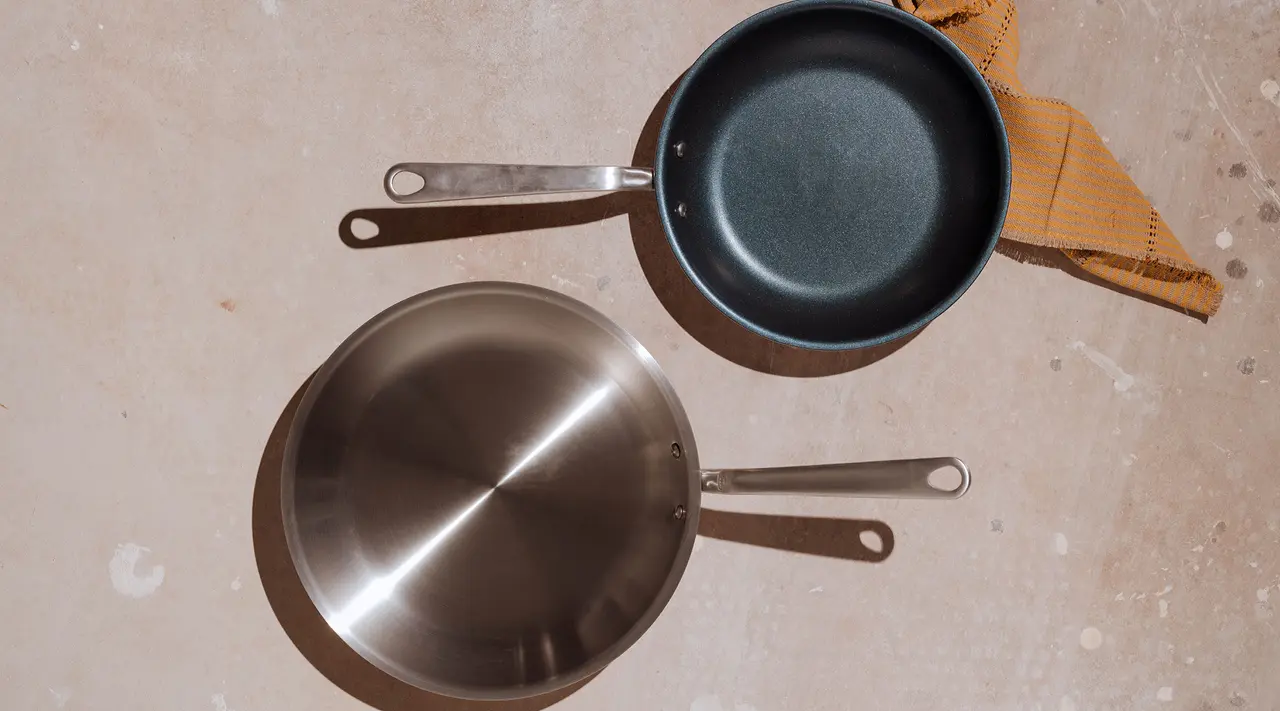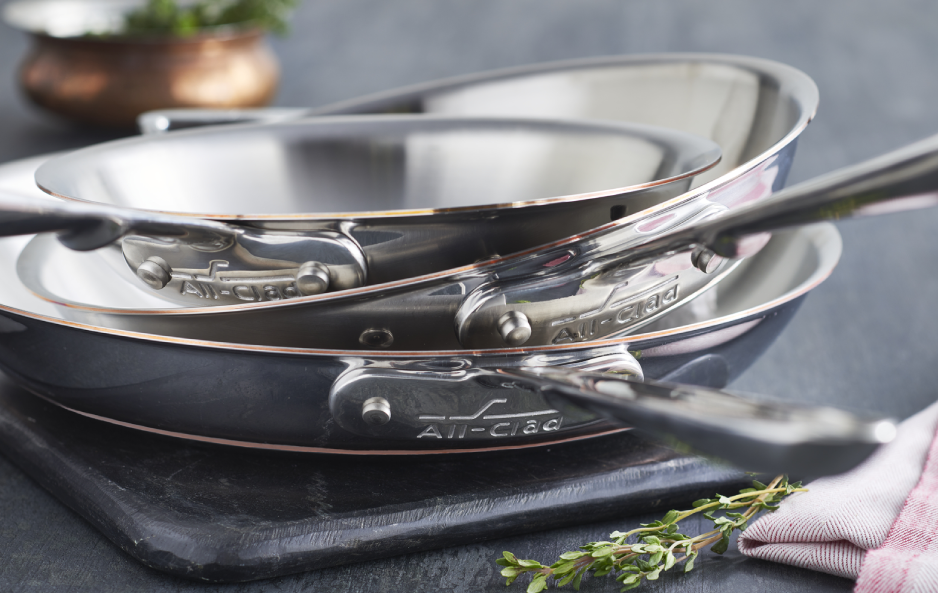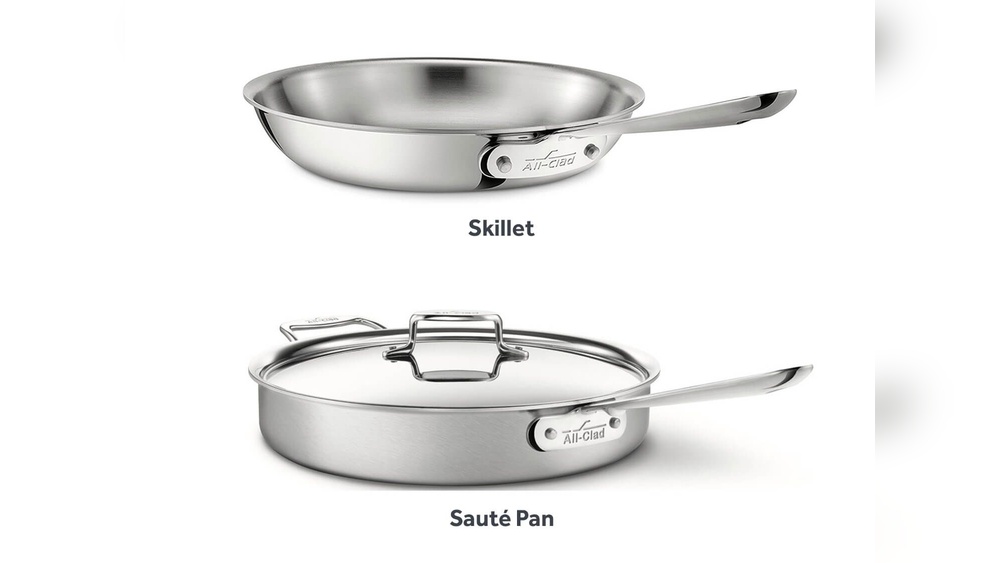Are you wondering if a skillet and a frying pan are actually the same thing? You’re not alone.
Many home cooks and even food lovers often use these terms interchangeably, but there are subtle differences that can change how your food turns out. Knowing which one to use can make your cooking easier and your meals tastier. You’ll discover what sets a skillet apart from a frying pan, how their shapes and depths affect your cooking, and when to reach for each one in your kitchen.
Keep reading—you’ll never look at these pans the same way again!
Skillet And Frying Pan Basics
A skillet and a frying pan often cause confusion in the kitchen. Both tools look similar and serve many of the same purposes. Understanding their basics helps you choose the right pan for your cooking needs. This section explains the common features and terminology differences between skillets and frying pans.
Common Features
Skillets and frying pans share many traits. Both have flat bottoms that heat food evenly. They feature sloped sides for easy stirring and flipping. Both pans work well for frying, searing, and sautéing. Most skillets and frying pans come with a long handle for safe grip. Many are made from similar materials like cast iron, stainless steel, or aluminum. Both types can be used on stovetops and in ovens, depending on the material.
Terminology Differences
The term “skillet” is more common in American English. It usually describes a pan with higher, straighter sides. This design holds liquids better, making it good for sauces and braises. “Frying pan” often refers to a pan with lower, more sloped sides. This shape helps flip foods like eggs or pancakes easily. Some cooks use the terms interchangeably, but the slight shape difference affects cooking style. Knowing these terms helps you pick the right pan for each recipe.

Credit: deliciouslyrushed.com
Shape And Side Design
The shape and design of a skillet and a frying pan affect how you cook with them. Both have round bottoms and handles. The main difference lies in the height and curve of their sides. These features change how heat spreads and how easy it is to handle food.
Understanding these details helps choose the right pan for your cooking needs. Small changes in shape can impact your cooking style and the dishes you prepare.
Side Height And Curvature
Skillets usually have taller and straighter sides. This design holds liquids better and stops food from spilling out. Frying pans have lower, more sloped sides. They make turning and flipping food easier. The curve of the sides also affects how much heat reaches the food edges.
Impact On Cooking Techniques
Taller sides in skillets are great for simmering sauces or cooking stews. They keep moisture inside and allow for slow cooking. Shallow frying pans work best for quick frying and searing. Their shape helps in tossing food and making even contact with the heat.
Choosing between them depends on what cooking style you prefer. Each shape supports different techniques and recipes.
Depth And Capacity
The depth and capacity of a skillet and a frying pan affect how you cook. These factors change the way heat moves and how much food you can prepare at once. Skillets usually have deeper sides than frying pans. This extra depth helps hold liquids and sauces during cooking. Frying pans tend to be shallower, which suits fast cooking methods. Understanding these differences helps choose the right pan for your recipes.
Suitability For Saucy Dishes
Skillets work well for dishes with sauces or liquids. Their deeper sides keep sauces from spilling over. You can simmer and braise food easily in a skillet. Frying pans have lower sides. They are not ideal for dishes with much liquid. Use a frying pan for dry cooking or frying.
Effect On Heat Distribution
Deeper skillets hold heat longer due to their thickness and size. This helps slow cooking and even heat spread. Frying pans heat up quickly because of their shallow design. They are perfect for quick tasks like searing or frying eggs. The pan’s depth affects how heat moves and cooks food.

Credit: madeincookware.com
Versatility In Cooking
A skillet and a frying pan share many uses in the kitchen. Both are great for frying, searing, and sautéing. Their design differences affect how you cook with each one. Choosing the right pan can improve your cooking experience.
Understanding their versatility helps you pick the best tool for your recipe. Each pan suits different cooking styles and dishes. This can save time and enhance meal flavors.
Range Of Suitable Recipes
Skillets work well for recipes needing some liquid, like stews or sauces. Their deeper sides hold liquids better. You can use a skillet for braising meats or simmering vegetables.
Frying pans excel at quick cooking with high heat. They are perfect for frying eggs, pancakes, or stir-frying vegetables. Their shallow sides make flipping food simple and fast.
Limitations Of Each Pan
Skillets can be bulky and harder to handle for quick tasks. Their deeper sides may slow down cooking for foods needing fast heat.
Frying pans may not hold liquids well, which limits their use with saucy dishes. Their shallow design can cause splatter when cooking with oil or sauces.
Common Uses In The Kitchen
Both skillets and frying pans play important roles in the kitchen. They help prepare a wide variety of meals. Understanding their common uses can improve cooking results. Each pan type suits different cooking styles and tasks. Knowing which to use saves time and effort.
Tasks Ideal For Skillets
Skillets have higher sides than frying pans. This makes them perfect for dishes with sauces. They work well for braising meat and vegetables. Their depth holds liquids, preventing spills. Skillets also handle slow cooking and simmering. They are great for one-pan meals. Casseroles and stews cook evenly in skillets. Their design supports oven use too.
Best Uses For Frying Pans
Frying pans have lower, sloped sides. This design helps flip foods easily. They are ideal for frying eggs and pancakes. Stir-frying vegetables is quick in frying pans. Their shape allows moisture to escape fast. This results in crispier textures. Frying pans heat quickly and evenly. They suit high-heat searing and browning tasks. Cooking thin cuts of meat or fish works well here.
Lid Availability And Benefits
Both skillets and frying pans can come with lids, but the availability and benefits of these lids vary. Lids help trap heat and moisture, making cooking more efficient. They also keep food warm and reduce splatters. Understanding the differences in lid options helps choose the best pan for your needs.
Skillet Lid Options
Skillets often come with lids made from metal or glass. Metal lids are durable and retain heat well. Glass lids let you see the food without lifting the lid. Many skillets have lids designed to fit tightly, which helps with slow cooking or braising. Some skillets include lids that are oven-safe, adding cooking versatility.
Frying Pan Lid Characteristics
Frying pans usually have fewer lid options. When lids are available, they tend to be glass for easy viewing. These lids are often lightweight and fit loosely to allow steam to escape. Frying pan lids suit quick cooking where moisture control is less critical. They help reduce splatters but may not retain heat as well as skillet lids.
Material And Heat Compatibility
Material and heat compatibility play key roles in choosing the right pan. The type of material affects how the pan heats up and holds temperature. This impacts cooking results and the pan’s durability. Skillets and frying pans often differ in materials used. Understanding these differences helps pick the best pan for your kitchen.
Heat Retention And Distribution
Skillets usually have thicker bases. This helps them retain heat longer. Cast iron skillets are a great example. They heat evenly and keep heat steady. Frying pans often use lighter materials like aluminum. These heat up fast but cool down quickly. Even heat distribution prevents hot spots. It ensures food cooks uniformly without burning.
Compatibility With Cooking Surfaces
Material affects which cooking surfaces the pan works on. Cast iron skillets work well on all stovetops, including induction. Stainless steel pans also fit most surfaces. Non-stick frying pans may not suit high heat or induction stoves. Some materials can warp on glass or ceramic tops. Choosing a pan compatible with your stove avoids damage and improves cooking.

Credit: www.all-clad.com
Choosing The Right Pan
Choosing the right pan can improve your cooking experience. Both skillets and frying pans have their uses. Knowing which to pick depends on your needs. Consider how you cook and what you cook most often. This helps you find the perfect pan for your kitchen.
Considerations Based On Cooking Style
Think about how you like to cook. Skillets have higher sides. They hold sauces and liquids well. They work for dishes that need slow cooking or braising. Frying pans have lower, sloped sides. They are great for quick frying and flipping food. Eggs, pancakes, and stir-fries cook well in frying pans. Choose a pan that fits your usual recipes.
Size And Storage Factors
Size matters when picking a pan. A larger pan cooks more food at once. It is good for families or meal prep. Smaller pans heat up faster and take less space. Check your kitchen storage before buying. Heavy pans can be hard to handle. Lightweight pans are easier to move and clean. Pick a size that matches your kitchen space and cooking habits.
Frequently Asked Questions
What Is The Difference Between A Skillet And A Fry Pan?
A skillet has higher, straighter sides and is deeper, ideal for saucy dishes. A fry pan has lower, sloped sides, perfect for quick, high-heat cooking like frying and flipping.
What Is Considered A Skillet?
A skillet is a versatile frying pan with higher, straighter sides. It suits searing, sautéing, and cooking with liquids like sauces. Skillets are deeper than standard frying pans, allowing better heat retention and use in various cooking methods, including braising and simmering.
Can You Use A Skillet To Fry Food?
Yes, you can use a skillet to fry food. Its higher sides hold oil well and prevent splatters. Skillets heat evenly and handle high temperatures, making them ideal for frying meats, vegetables, and eggs. Choose a skillet for versatile frying and searing tasks in your kitchen.
Why Is It Called A Skillet?
The term “skillet” comes from Old French “escuelette,” meaning a small pan. It refers to a versatile, deep frying pan used for cooking various dishes.
Conclusion
A skillet and a frying pan look alike but serve slightly different needs. Skillets have higher sides and hold sauces well. Frying pans are shallower, perfect for quick frying and flipping. Choosing depends on what you cook most often. Both tools are useful in every kitchen.
Understanding their differences helps you cook better meals. Keep both handy for varied cooking tasks. Simple shapes, simple uses—both make cooking easier.

